To me, these are the three best archaeological sites in Scotland!
(And if you’re wondering what exactly archaeology is anyways, please check out my post about it!)
I studied archaeology in Scotland for four years, and during that time I got to visit a ton of sites! Some through my university program, some through the university’s Archaeology Society, and many on my own through road trips with my best friend. Here are my favorite archaeological sites – read to the end for a bonus recommendation!
It’s hard picking just three! So, I’ll be sure to make future posts on the individual regions to give folks a broader insight into all the amazing places to visit.
1. Jarlshof (Shetland)
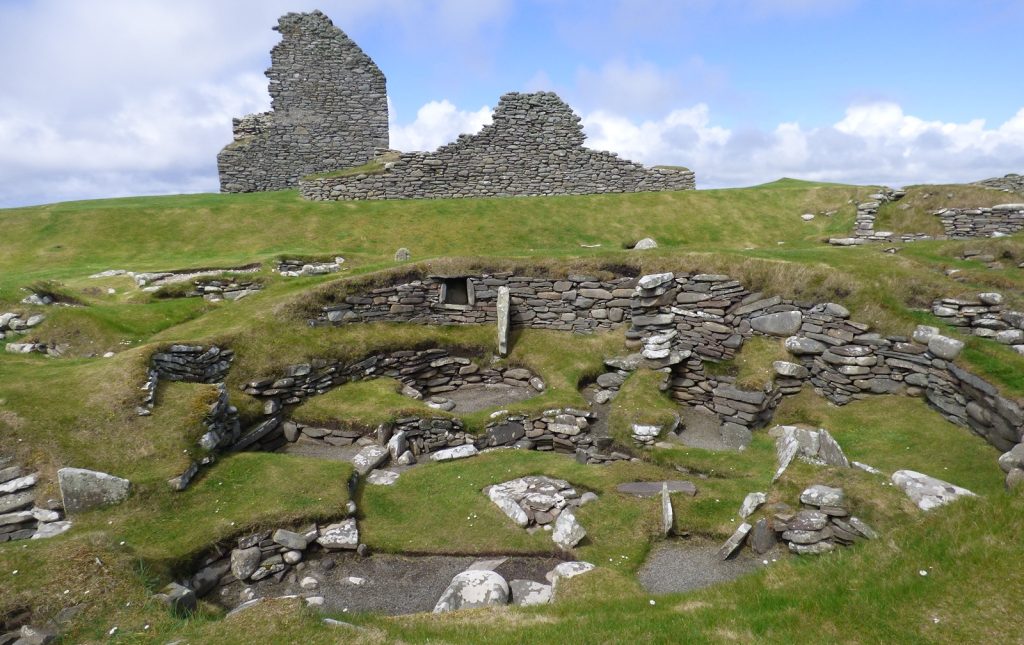
Opening times: April 1st – Sept 30th, every day 9.30am – 5pm
Oct 1st – March 31st, Tue – Sat, 10am – 4pm
Entrance Fee: £8.50 (or £7.50 booked online – for full price list check the official website, linked above)
What’s There to See
Jarlhof is easily my favorite archaeological site in Scotland.
The amazing thing about Jarlshof is the presence of thousands of years of Shetland history in one place. It illustrates how people have gravitate to the same place, building and rebuilding.
You start off with a Neolithic midden, dating back over 4,000 years. Admittedly, it doesn’t look too spectacular in comparison to everything else you’re about to see, but it’s an amazing anchor in time!
Then, you can walk through a Bronze Age workshop, with its narrow, round rooms. Next, you’ll explore the Iron Age Broch, which is partially eroded – letting you know that the coastline has changed quite a bit over the last 2,000 years!
After the Broch, you can enter the winding paths among some Iron Age wheelhouses, and sneak into them to see their wheel-like structure first-hand.
The rectangular Norse longhouses are a clear contrast to the previous round buildings! Check out the Shetland Museum in Lerwick to see some of the finds from these farmsteads, such as a slate engraved with a quick sketch of a Norse ship.
A medieval farmstead continues the architecture introduced by the Norse.
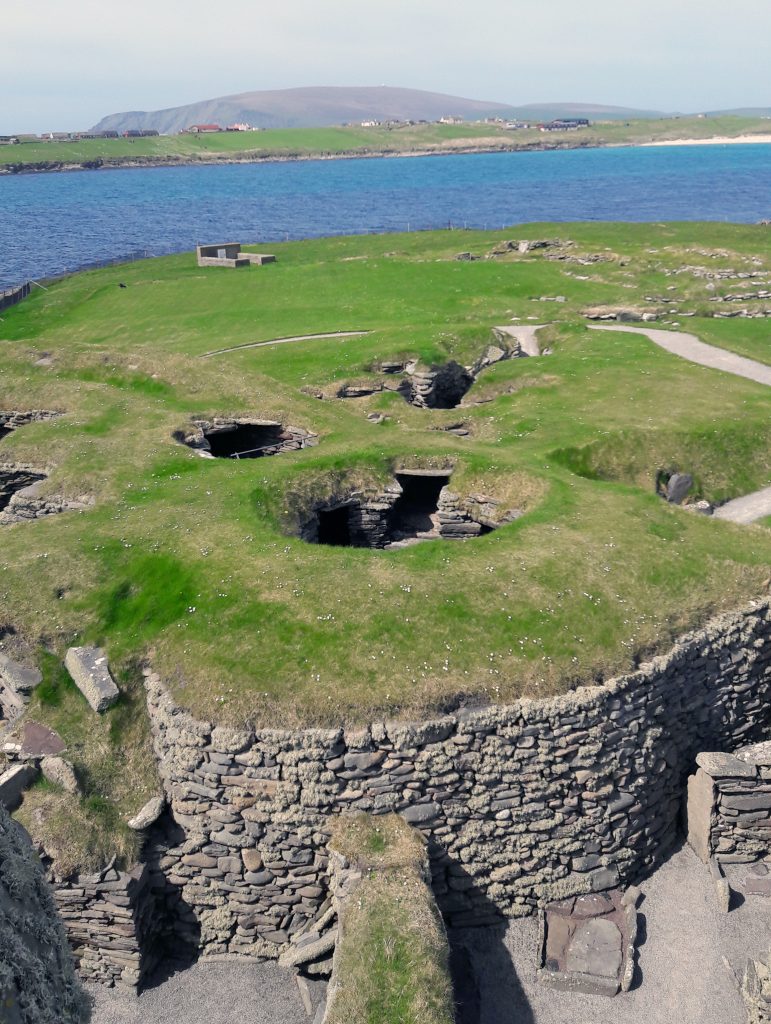
Finally, you enter into the ruin of the Laird’s house from the 1500s, and a small staircase let’s you climb up to gain a final view of the 4,000 years you have just walked through!
Seeing changes to architecture throughout time hints at the massive changes of local life, from beginning to work with metal, the arrival of Norsemen, to the establishment of a feudal system. And all is set in the rough and beautiful landscape of Shetland.
Jarlshof is open year-round, but the visitor center only operates during summer. In the winter, simply stop by the nearby hotel to pay the entrance fee and receive an audio guide (highly recommended).
What else to see on Shetland?
If you’re on Shetland, I also highly recommend checking out: Unst’s Viking Longhouses, Old Scatness, Mousa Broch, and Culswick Broch. And be sure to stop by the Shetland Museum in Lerwick to see artefacts from prehistory til today, including the amazing silver treasure found at St Ninian’s Isle!
If you’re interested in seeing some beautiful nature, stop by Sumburgh Head (plenty of Puffins in the late spring and a lovely cafe), visit Eshaness for dramatic cliffs, or head all the way up to Unst for a hike in the stunning Hermaness nature reserve.
If you, like me, are obsessed with fiber crafts, don’t miss Jamieson’s Yarn shop in Lerwick.
2. The Ring of Brodgar (Orkney)
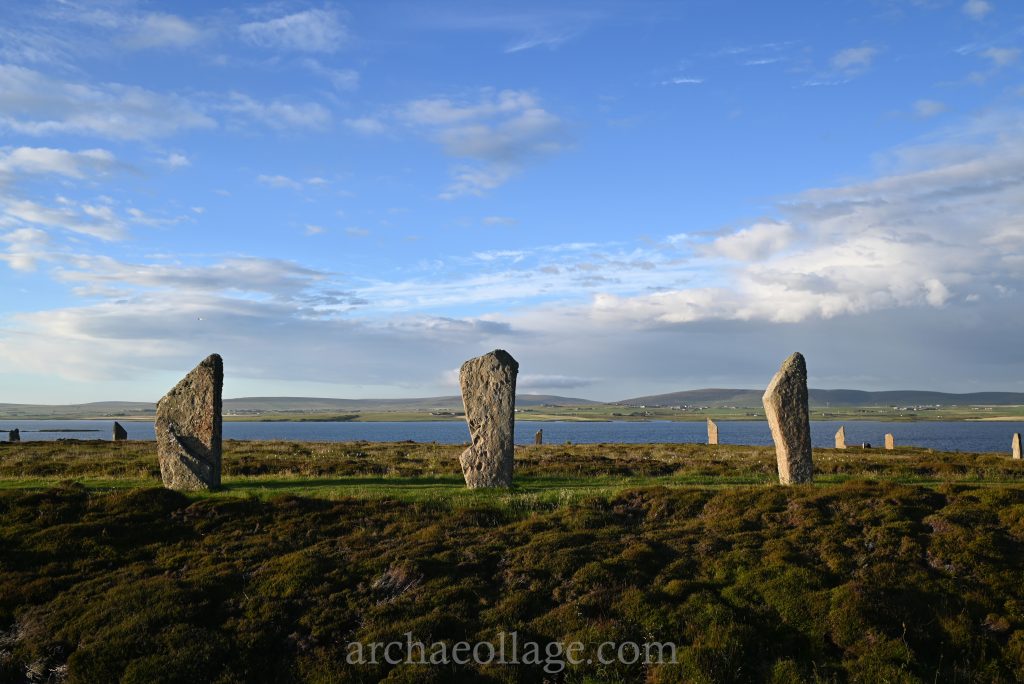
Opening Times: 24/7
Entrance Fee: free!
What’s There to See?
The Ring of Brodgar is one of the most impressive stone circles in Scotland. I was torn between choosing Maeshowe (see below) or the Ring of Brodgar as my second pick. But Maeshowe can be tricky to visit, as you need to be part of a tour. The Ring of Brodgar, on the other hand is always open to the public. Even if you have just one day on Orkney, you won’t have troubles simply stopping by.
The Ring of Brodgar had originally had megaliths (standing stones) standing in a true circle. Now, over 4,000 years later, there are 27 stones left, standing in a ring measuring 104m (ca. 341 feet) in diameter. It was restored in 1906 and over the next decades, some fallen stones were re-erected. The site was excavated in 1973, 2008, and 2013.
The stone circle is surrounded by archaeology. There are over a dozen burial cairns and other standing stones. People have added and re-engaged with this landscape for a long time.
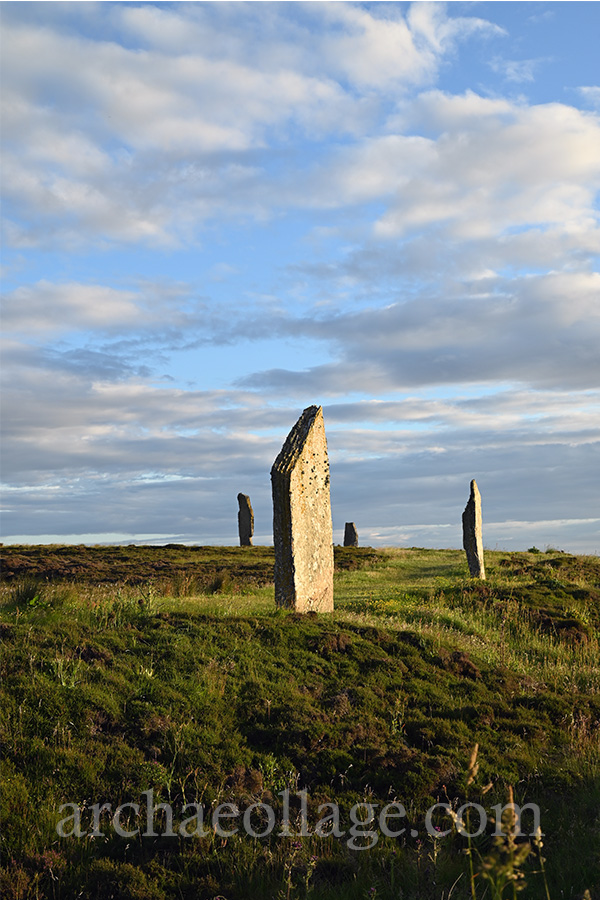
The setting of the stone circle is particularly impressive – it sits on an isthmus (land bridge), situated between Skara Brae and Maeshowe (among other archaeological sites). On the one side, there is Loch of Harray, which is the largest Loch on the main Orkney Island. It is a freshwater Loch. On the other side, you have the Loch of Stenness – a salt water Loch! The Ring of Brodgar is in this way connecting land and sea, giving a safe harbor from the ocean (Loch of Stenness), and a freshwater fishing spot on the other side. It is also connecting ancestors and communities with the associated burials, and it connects Skara Brae with other monuments.
Standing at the Ring of Brodgar gives you a true appreciation of place and interconnection.
Check out this great blog post to learn more about the construction and excavation of the Ring of Brodgar.
What else to see on Orkney?
There is so much to see on Orkney!
If you’re visiting the Ring of Brodgar, you should absolutely go and see some of the famous sites nearby. Such as: the Neolithic Maeshowe tomb with Norse rune graffiti, as well as the Neolithic village of Skara Brae, which is a World Heritage site!
In Kirkwall, you won’t miss St Magnus Cathedral, as well as the Bishop and Earl’s Palaces next door. Best chippy in town would be Harbour Fry, hands down.
Subscribe to my blog for a post on Skara Brae soon! I also recommend the Brough of Birsay with its spectacular views, or the Neolithic Tomb at Cuween, which you can enter.
If you’re out by the Brough of Birsay, be sure to check tidal times to visit this tidal island. And on the way back, you can grab an excellent pastry at the Birsay Bay Tearoom.
3. Calanais Stones (Isle of Lewis)
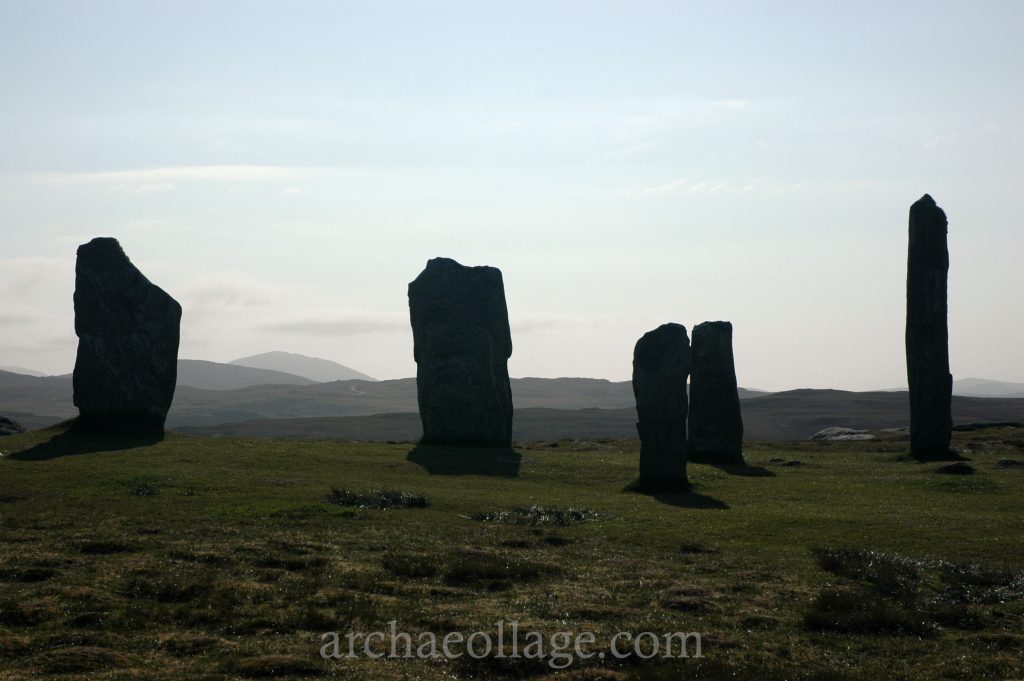
Opening Times: 24/7
Entrance Fee: free!
Another stone circle!? I know, I thought hard about how to excuse this. But Calanais absolutely had to make my list of best archaeological sites in Scotland. Let me explain why.
Fun fact; the Calanais Stones are actually pre-dating the Pyramids of Egypt, and Stonehenge!
What’s There to See?
First off, you may feel like this stone circle looks familiar if you have watched the Outlander series. You may or may not know that the stone circle shown in the show does not actually exist – and there is nothing close to it in the vicinity of Inverness. The show took inspiration from the Calanais Stones, however, which is why they look quite similar.
Or, perhaps, you may recognize the circle from Pixar’s movie Brave (2012) which had a few scenes set around this monument.
Calanais may also be spelled Callanish. This is because Calanais is a Scots Gaelic word, which is pronounced similar to “Callanish” if you say it correctly. In Gaelic, the Stones are also called Clachan Chalanais or Tursachan Chalanais (both meaning “Calanais Stones”).
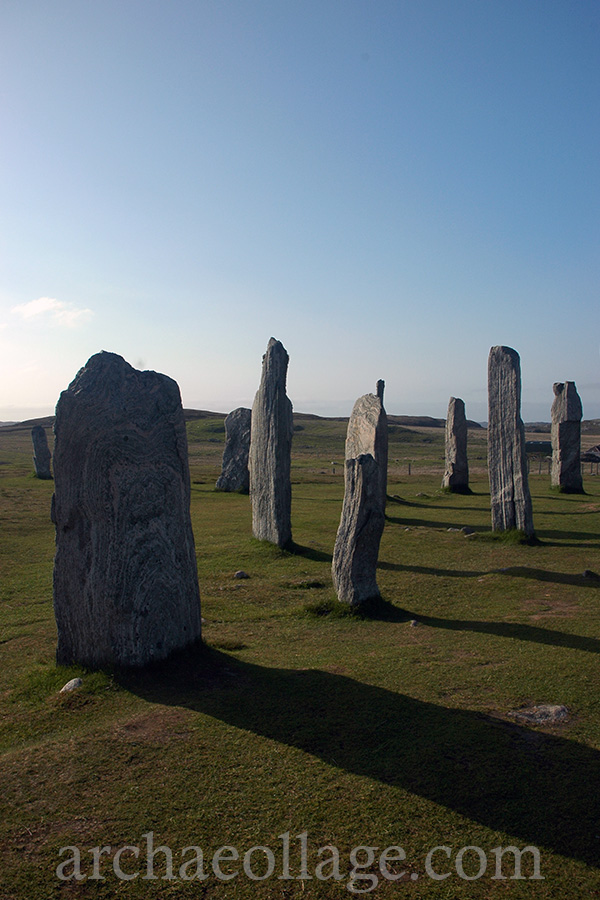
The stone circle was erected around 4,700 – 5,000 years ago. There are thirteen stones, and a monolith (singular standing stone) in the middle of the circle, as well as a small chambered tomb. The whole structure as we see it today was probably modified over time, rather than built in one go. Calanais is unique in the way that several avenues are connected to the main ring of stones.
Looking at a map of the stones, you may think that people couldn’t get the avenues quite right. But that’s not the case. We know that folks back then were more than capable of creating perfectly circular or rectangular lines of stone. Why didn’t they? They made a choice to have these avenues and stone rows be somewhat crooked. It’s possible that they point toward important astronomical directions, or places in the landscape.
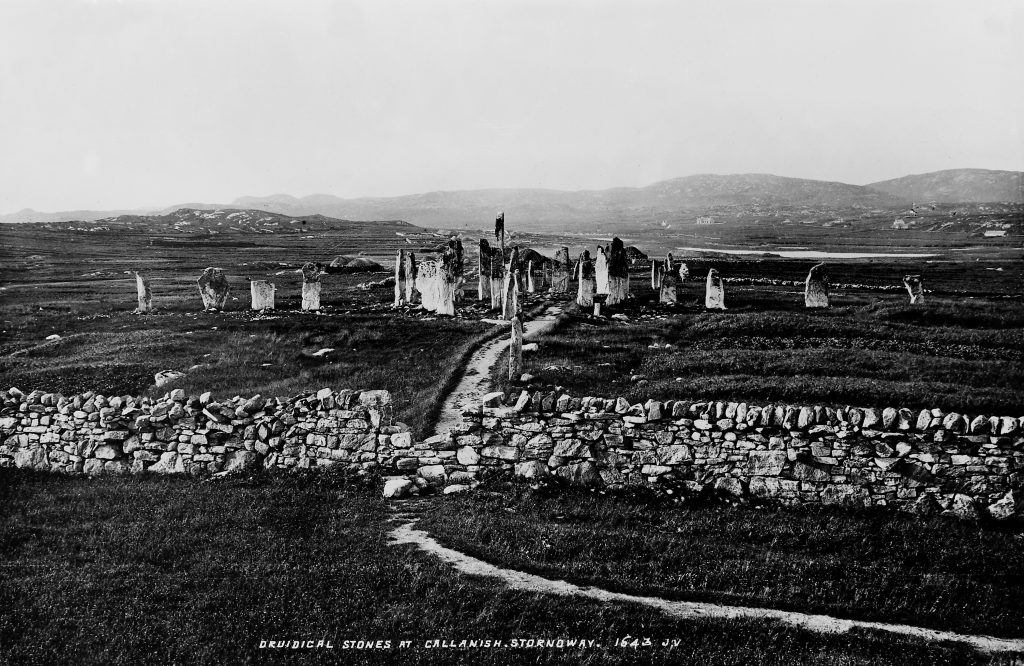
Photo part of the Wellcome Library, London, “M0006011 Druidic Stones at Callanish”, copyright under CC BY 4.0.
In 1847, about 1.5m (five feet) of peat was cleared away from the stones, revealing their true height. In some of the pictures and drawings afterward, you can clearly see the line of where the peat reached!
Please note that the Calanais Visitor Centre is closed until 2026 for renovations.
What else to see on Lewis?
If you’re visiting Calanais, plan in enough time to visit the other stone circles in the vicinity! There are at least eleven stone monuments in the immediate vicinity of Calanais. Some of them are intervisible with this stone circle.
I recommend checking out the huge Trussel standing stone, the Dun Carloway Broch, as well as the recreated Norse mill and kiln. For more local history, I recommend the Arnol Blackhouse, as well as the Gearrannan Blackhouse Village (where you can even rent accommodation).
Bonus: Kilmartin Glen, Argyll
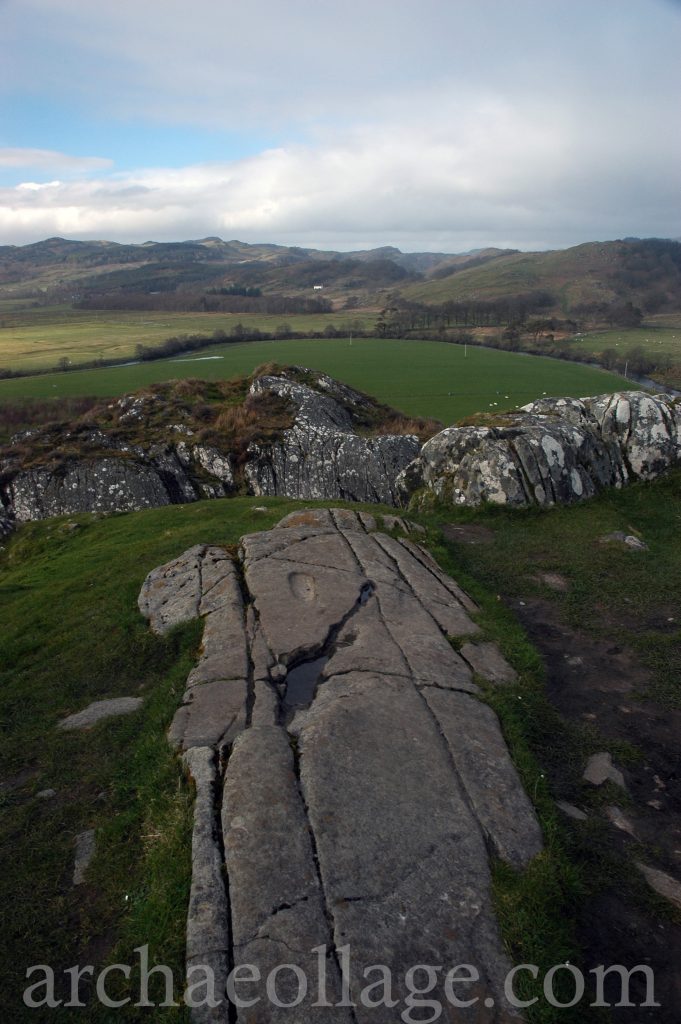
Okay, I had to throw in a non-stone circle for good measure!
To be fair, Kilmartin Glen is not a singular site, but a whole area in Argyll, and there is a massive concentration of Neolithic and Bronze Age archaeological sites all around. Around the village of Kilmartin, there are over 150 prehistoric monuments, including standing stones, burial cairns, as well as numerous examples of ancient rock art.
Be sure to check out the Kilmartin Museum, which houses artefacts found in and around the monuments. They also give free walking tours or offer a self-guided trail.
In 2021, a visitor discovered prehistoric deer carvings in one of the cairns – the first of their kind ever recorded in Scotland.
Additionally, the area was a political center of the Picts, with an impressive fortress at Dunadd.
x
Do you agree with my top picks of the best archaeological sites in Scotland?
Which sites would you love to visit? Or have you been lucky to go and see some of these? Which sites do you recommend? Please drop a comment below!
x A
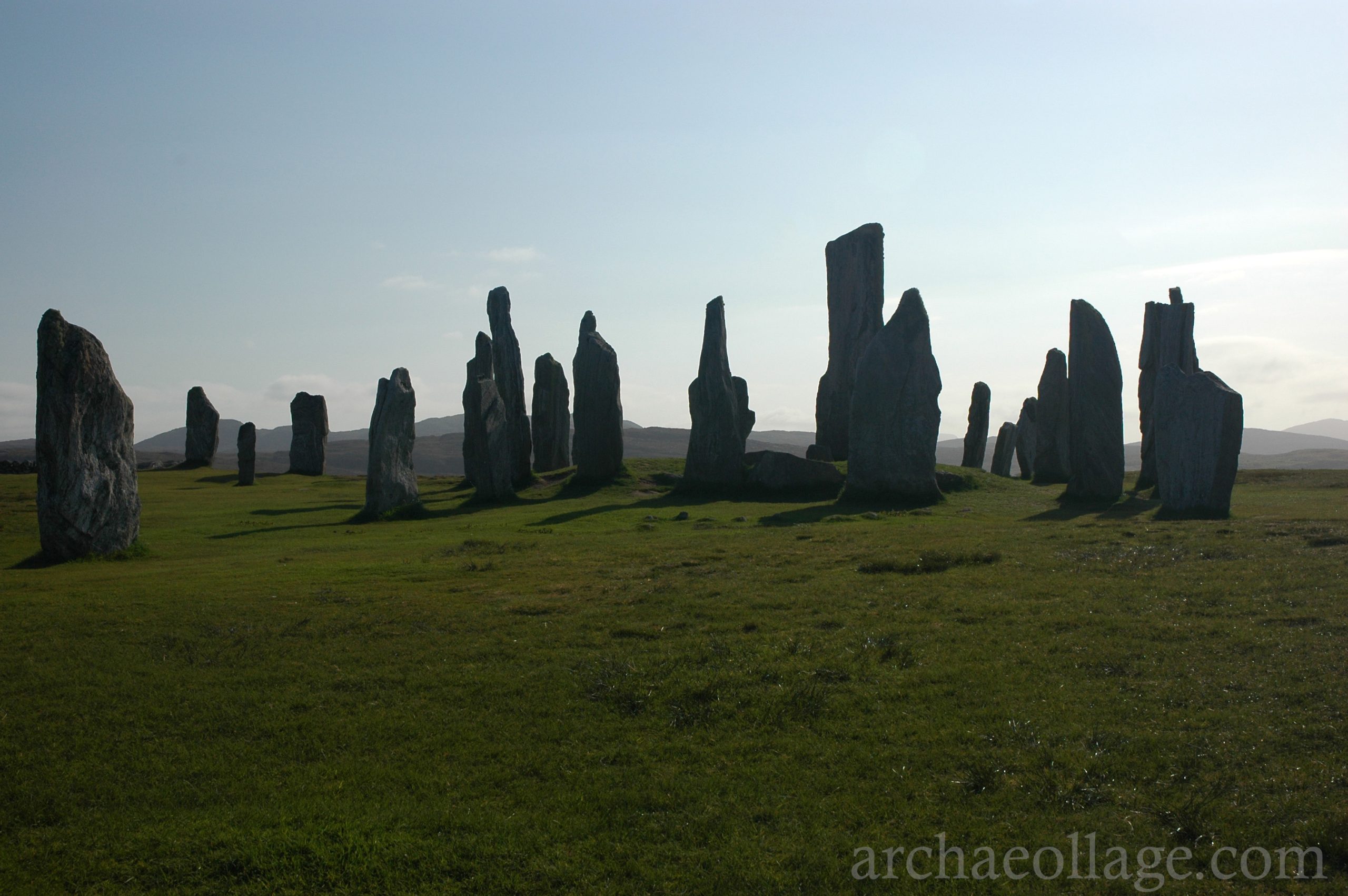
Leave a Reply